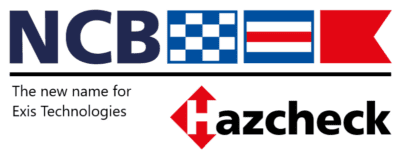Deadly container ship fires finally spurring carrier action – Journal of Commerce
Maersk first participant in National Cargo Bureau Container Inspection Safety Initiative
The horrible fire aboard the 15,000-TEU Maersk Honam that began on March 6 in the Arabian Sea on a westbound voyage, killing five of its 27 crew members, seems to have done something that other recent container ship fires failed to do: spurred carriers into action.
It’s now an unavoidable fact that the precautions traditionally taken to avoid container ship fires – such as ensuring that stowage plans comply with dangerous goods guidelines and carriers scan bills of lading for keywords indicating the possibility of misdeclared cargoes – are failing to adequately mitigate the risk to crews, cargoes, and ships. According to the insurer TT Club, container ship fires are occurring at an average rate of one every 60 days.
Part of the reason for this is the sloppiness that still exists in the shipping process. Of the 31,000 containers and portable tanks inspected by the National Cargo Bureau in 2017, about 4 percent revealed improperly secured hazardous materials inside containers. Of the 1,721 vessel stow plans it inspected in 2017, 20 percent revealed errors in regard to the International Maritime Dangerous Goods Code and/or the vessel’s Document of Compliance. It would be impossible to imagine error rates such as this in aviation.
The disconnect seemingly has been growing between the frequency and severity of container ship fires and the lack of industry response. Container lines were solidly behind an amendment to the Safety of Life At Sea, or SOLAS, convention to prevent the shipment of overweight containers, which took effect in 2016. But the carriers’ trade group that led the charge on the container weight issue, the Washington, DC-based World Shipping Council, says the problem of container ship fires isn’t within its area of expertise and it’s not working on possible solutions.
Then came Honam, which was still burning five weeks after the fire started. In the wake of the incident, Maersk launched an in-depth review of its stowage procedures with help of the American Bureau of Shipping classification society and, without having determined the cause of the Honam fire, will nevertheless implement stowage plan changes to its fleet worldwide within the next few months.
It will ban the stowage of dangerous goods cargoes near crew accommodation quarters and near the engine room, and will ban below-deck stowage in all cases of Class 5 dangerous cargoes that are resistant to firefighting, according to Ole Graa Jakobsen, Maersk’s head of fleet technology. “This was a wake-up call for us,” he said.
Another outgrowth of the Honam disaster was the creation of a Container Inspection Safety Initiative by the New York-based National Cargo Bureau. It will provide free inspection of inbound containers [using the Hazcheck Inspections system developed by Exis Technologies] to the United States from locations where inspections aren’t performed. It will allow for the collection of data that will be used to analyze in order to promote safety. Maersk is the first participant.
Maersk Honam “got a lot of people’s attention, and hopefully there will be actions” that come out of it, said Ian Lennard, president of the National Cargo Bureau.
On the accurate declaration and proper stowing of goods
Properly stowing declared dangerous goods is an obvious area for carriers to address if, as Maersk does, they see opportunities for improvement. Far more difficult to address is the murky phenomenon of misdeclared goods. Because investigations and litigation stemming from container ship fires often take years and aren’t always conclusive, it’s difficult to pinpoint exactly how misdeclared goods contribute to the problem. But no knowledgeable source that JOC’s Peter Tirschwell has spoken to over the last few months failed to finger misdeclarations as a culprit.
“If someone is going to knowingly misdeclare, that is a tough thing to monitor. That is one of the things that makes the topic so difficult,” Lennard said.
Some believe there is no need for a stricter compliance regime because some shippers will always be motivated financially to misdeclare cargo, as they are known to do with non-dangerous cargo as well.
“We actually don’t believe that stricter rules on shippers would help anything,” Hapag-Lloyd spokesperson Nils Haupt said. “Already today, shippers have to sign a legal document, the dangerous goods declaration/container packing certificate. The shipper who today deliberately doesn’t declare the respective commodities to shipping lines won’t change that behavior just because of additional legal requirements.”
In the aftermath of the Honam fire, Maersk may be taking a different view. Maersk is looking at “what we can do in terms of quality control and checks to ensure that what is declared is actually what is in the container,” Jakobsen said. “We see this as a root cause of some of the fires we have seen on container vessels and in container yards.”
It’s unfortunate that it takes a tragic incident such as the Honam fire to create movement in addressing a problem that has to be seen as out of control. Maersk hopes others will follow its lead in responding. Maybe Honam will come to be seen as a catalyst for positive, necessary change.







